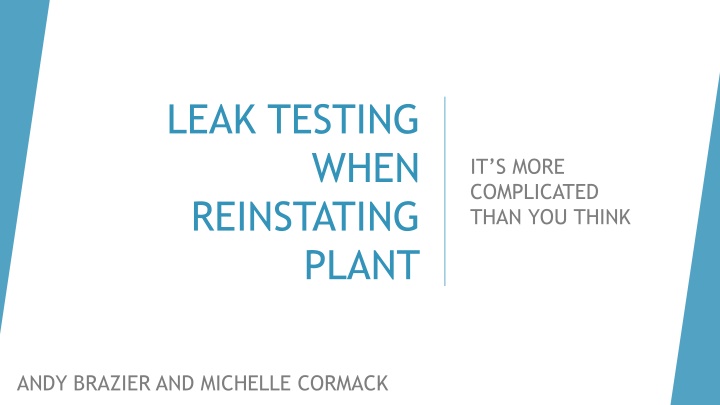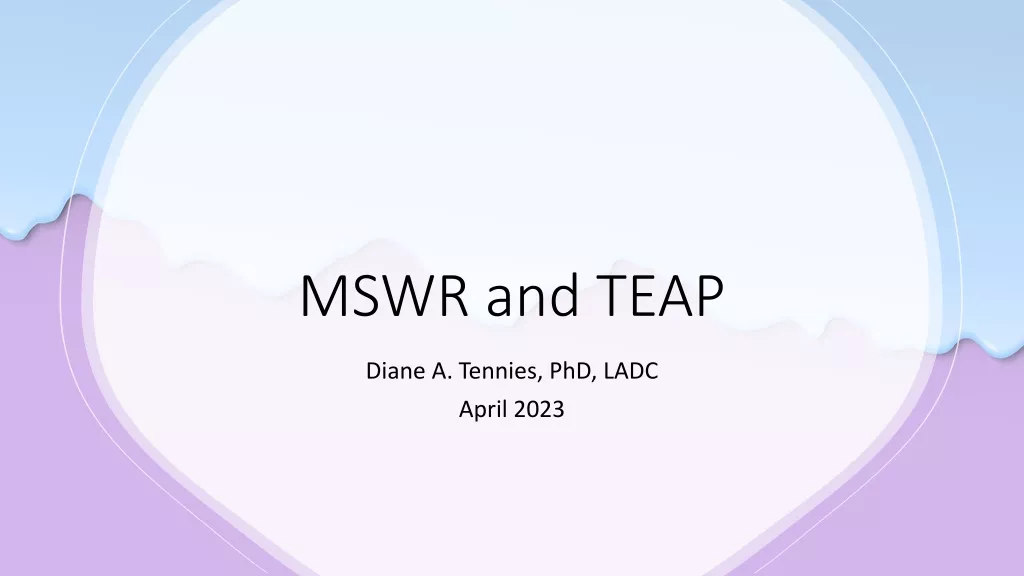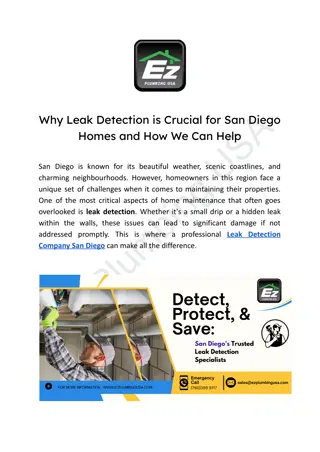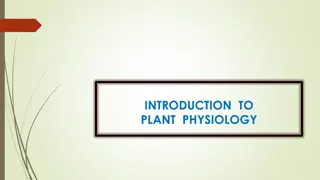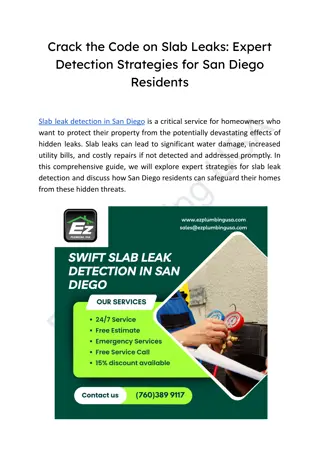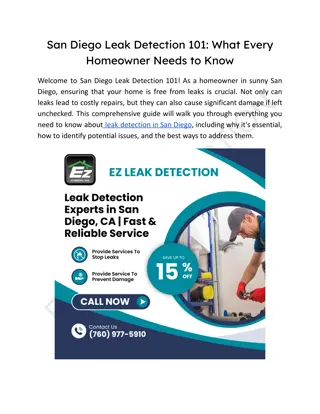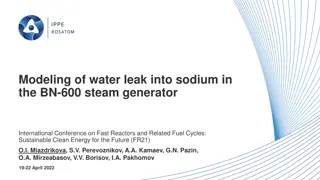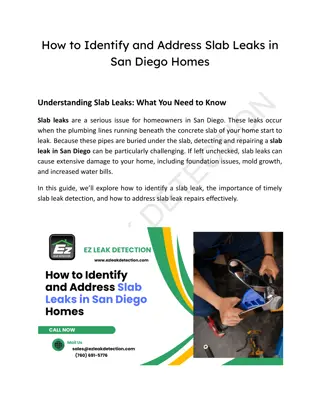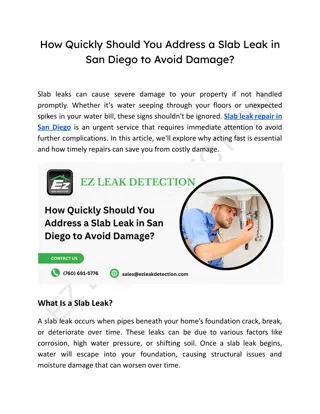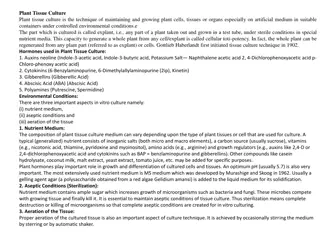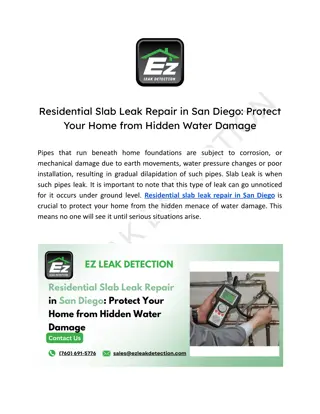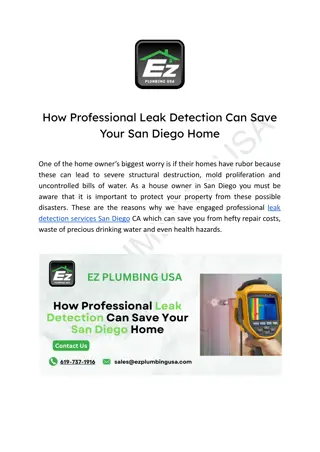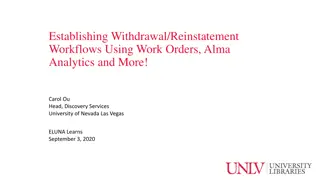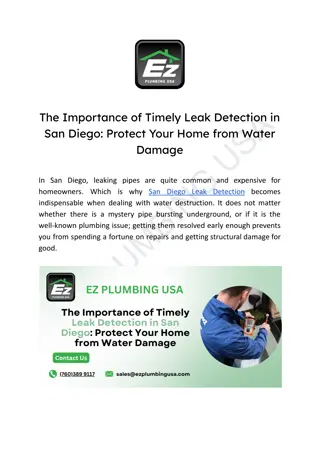Leak Testing Reinstatement of Plant - Safety Guidelines
In-depth insights into leak testing for reinstating plants safely, including types of leak tests, industry guidance, potential hazards, and choosing the correct test method to ensure plant integrity and safety.
Download Presentation

Please find below an Image/Link to download the presentation.
The content on the website is provided AS IS for your information and personal use only. It may not be sold, licensed, or shared on other websites without obtaining consent from the author.If you encounter any issues during the download, it is possible that the publisher has removed the file from their server.
You are allowed to download the files provided on this website for personal or commercial use, subject to the condition that they are used lawfully. All files are the property of their respective owners.
The content on the website is provided AS IS for your information and personal use only. It may not be sold, licensed, or shared on other websites without obtaining consent from the author.
E N D
Presentation Transcript
LEAK TESTING WHEN IT S MORE COMPLICATED THAN YOU THINK REINSTATING PLANT ANDY BRAZIER AND MICHELLE CORMACK
SIRP Safe Isolation and Reinstatement of Plant What is reinstatement of plant? Returning the process plant back to service following intrusive maintenance What does it achieve? Control of major accident hazards Prove integrity of plant Reduce likelihood of leaks when process fluids are reintroduced on plant restart How is this achieved? Leak testing
Relevant Industry Guidance HSG253 - The Safe Isolation of Plant and Equipment, (HSE, 2006) Almost no mention of how to safely reinstate plant Guidance on Safe Plant Reinstatement, (Energy Institute, 2023) Issued in 2023 to plug the industry guidance gap
Types of Leak Test Full reinstatement leak test Typically carried out at 90%-95% of the system design pressure if there is a system PSV installed or 100-110% of system design pressure where no system PSV installed Sensitive leak test Uses a tracer gas, such as helium, and specialist detection equipment to detect leaks as small as 5scf/yr Gross leak test Carried out at low pressure typically to check for larger leaks before a full leak test or service test Service test Reintroduction of process fluids with periodic leak checks carried out of a pre- determined duration Reverse integrity test Uses specialist gaskets to prove individual joint integrity
Choosing the correct test Full Reinstatement Leak Test Pneumatic or hydraulic test carried out at, or close to, system design pressure Demonstrates disturbed joints do not leak at highest foreseeable pressures The safest option, or is it?
Hazards of Leak Testing High pressures Stored energy and projectiles Flexible hoses Temporary equipment and fittings Fluid injection (100psi is all it takes to penetrate the skin) Asphyxiation from test gas Low temperature embrittlement Hydrates Corrosion Humans
Safety Critical Task Analysis (SCTA) Tried and tested qualitative method. It involves: Describing the task method in a structured and systematic way so that anomalies, ambiguities and inconsistencies can be identified and resolved; Analysing each task step to identify potential human errors and consequences; Evaluating Performance Influencing Factors (PIF) that may make the likelihood of error greater; Considering the risk controls in place and determining if they are sufficient to reduce risks of the task to As Low As Reasonably Practicable (ALARP). Leak testing is amenable to this approach
Case Study Fuel Gas System on Offshore Gas Installation
Leak test options Service test deisolate the plant and introduce gas via its normal route Gross leak test inject low pressure nitrogen through the vent on the knock- out drum Full reinstatement test inject high pressure nitrogen via a suitable connection Platform had prepared a detailed leak test procedure Marked up P&ID
Leak test potential pitfalls De-isolating PSVs but not the rest of the system Sanction To Test (STT) Finding a suitable connection for the leak test gas taking into account Non-return valves HP-LP interfaces Accessibility Gas break-through to drains What if remedial work had to be done?
Summing up We had a procedure that looked good and appeared to be consistent with latest guidance The SCTA highlighted a number of potential issues in addition to the personal safety issues of handling high pressure gas Using a liquid leak test fluid would be less hazardous but Not an option in many gas systems Contaminated liquid to be disposed of Can we reduce the test pressure if operating pressure is much lower than design pressure? Reverse Integrity Test (RIT) gaskets may be a future option but introduce their own issues
Conclusion Human errors during plant reinstatement Failure to make a joint (missing gasket, bolts not tightened) Joints made incorrectly (wrong gasket, misalignment etc.) Full reinstatement leak testing is not inherently safe, it adds complexity and is vulnerable to human error SCTA proved to be effective Full testing at high pressure is clearly required for commissioning new plant How often do joints fail catastrophically after normal intrusive maintenance? How much credit can we take for good plant design, joint integrity management systems and competent technicians?
